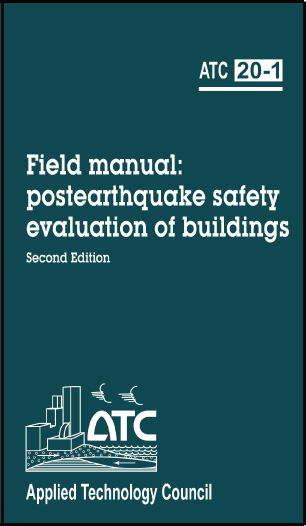ATC Responds to Recent recent earthquakes in Turkey/Syria
 The Applied Technology Council is concerned about the victims and communities affected by recent earthquakes in Türkiye and Syria, and would like to help.
The Applied Technology Council is concerned about the victims and communities affected by recent earthquakes in Türkiye and Syria, and would like to help.
To assist in response and recovery efforts in the aftermath of these earthquakes, ATC is providing a free recorded webinar on the ATC-20-1 Field Manual, Post-Earthquake Safety Evaluation of Buildings. This video is posted below. The purpose of this webinar is to provide an overview of the basic safety evaluation procedures following an earthquake. Please note that to effectively use the procedures in areas impacted by earthquakes, at the request of Authorities Having Jurisdiction, safety evaluators should have more comprehensive training, as well as an in-depth understanding of the local construction methods.
The procedures in the ATC-20-1 Field Manual are for inspection of buildings, and do not cover other structures, such as bridges and dams. Evaluation forms and posting placards contained within the document, including versions in English and Turkish, can be downloaded here. A copy of the ATC-20-1 Field Manual is highly recommended for reference. An electronic version of the ATC-20-1 Field Manual is not available, but a printed copy can be ordered here.
A five-hour long in-person comprehensive training is available from ATC on-demand for organizations wishing to host for their group. More information about this training option can be obtained here.
Other relevant resources that might be useful in post-earthquake efforts, in particular for recovery and rebuilding of schools and placement of emergency power systems in critical facilities (e.g., hospitals and schools), include:
- FEMA P-1000 report, Safer, Stronger, Smarter: A Guide to Improving School Natural Hazard Safety, was published in June 2017 with a focus on operational guidance (what to do before, during, and after an event) and on the physical protection of school facilities (what can be done to the structure and facility to improve safety). The report includes specific guidance for hurricanes and floods, as well as other natural hazards (see the Hurricanes Supplement and Floods Supplement in FEMA P-1000). More information on FEMA P-1000 and a link for free download can be found here.
- FEMA P-1019 report, Emergency Power Systems for Critical Facilities, A Best Practices Approach to Improving Reliability, was published in September 2014. This report provides unified guidance on emergency power vulnerabilities faced by critical facilities during natural disasters including flooding, along with associated mitigation strategies and code requirements intended to minimize these vulnerabilities. The report is available for free download here
\GR_ATC-20 Series\ATC-20-1\ATC-20-1_Cover_Bordered.jpg) .
.
